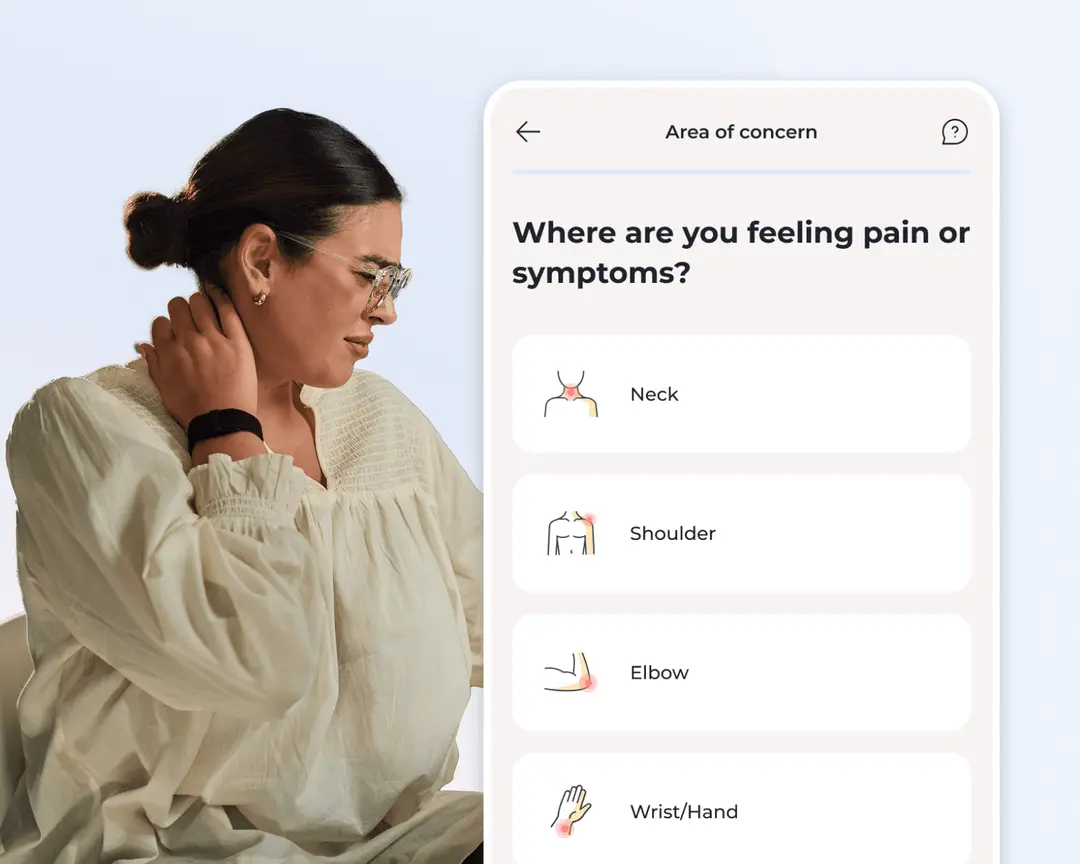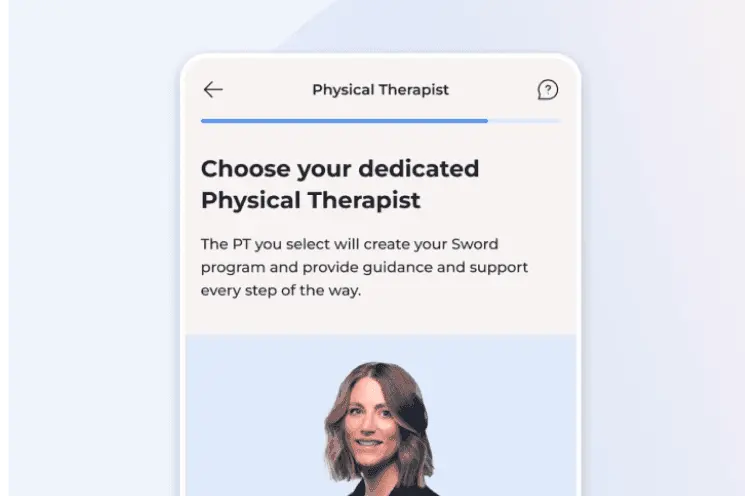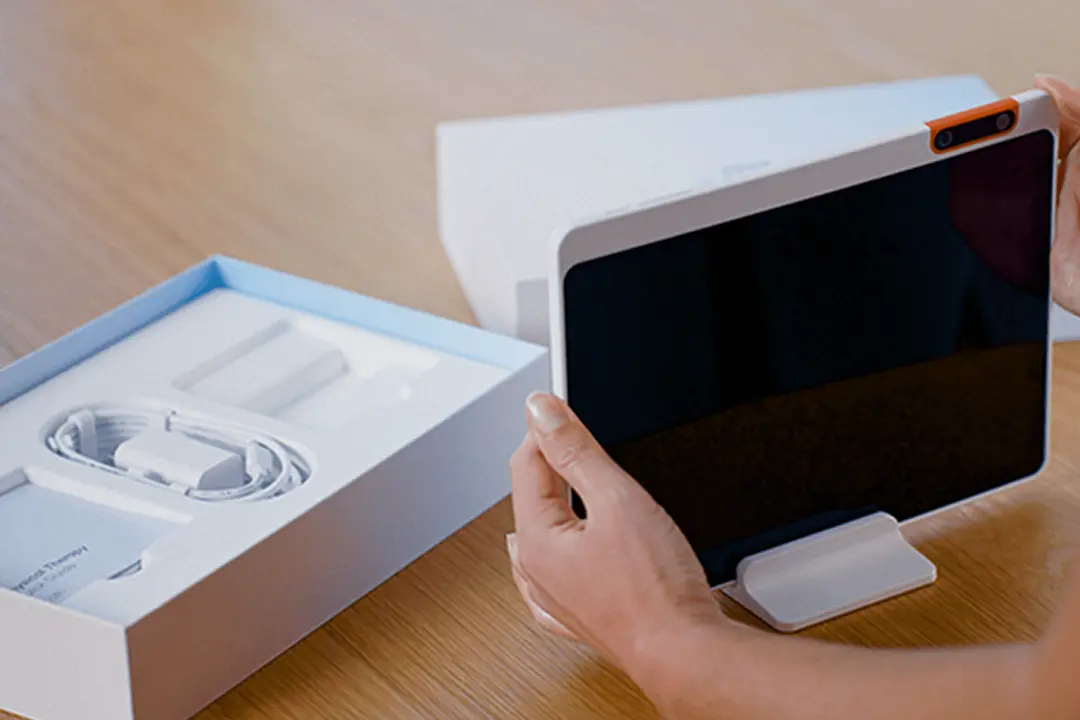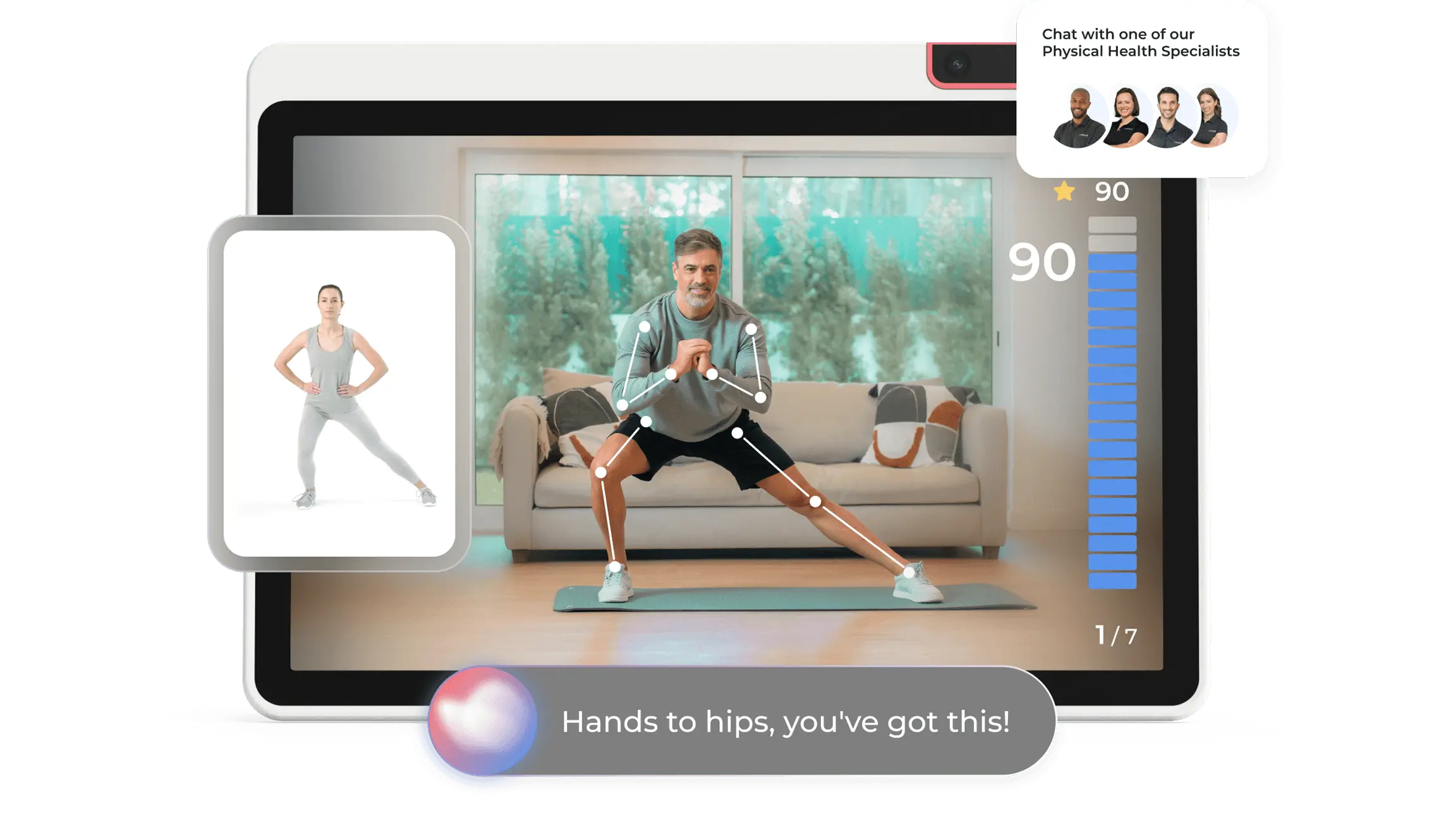October 24, 2025 • min read
What is Digital Physical Therapy?
Find out what digital physical therapy is, what it can do for you, and how it compares to virtual physical therapy.
Written by

Director, Clinical Specialists
If you live with joint, muscle, or back pain, you’re not alone. More than half of American adults experience musculoskeletal (MSK) pain each year¹. But getting care isn’t always simple. Finding the time to schedule physical therapy appointments, drive to a clinic, and stay consistent with youyr care plan can be difficult, especially if you are juggling work and family commitments.
Digital physical therapy changes that. It brings expert care directly to you through technology, making it easier to get the help you need to feel better, move freely, and get back to the things you love.
What is digital physical therapy?
Digital physical therapy is physical therapy delivered through technology. Programs which offer physical therapists maintain all the same clinical rigor as an in-clinic program, and in fact, digital PT gives patients greater flexibility and freedom when finding help for their pain via computer, phone, or tablet.
Take Nick, for example. Nick is 42, a father, and an avid golfer. In 2020, he moved his office to his home. For nearly six years, he’s dealt with chronic shoulder pain, and it’s impacted his job performance. Last year, he missed 13 days of work due to debilitating flare-ups.
Nick goes to a brick-and-mortar clinic for physical therapy and receives a list of exercises from his physical therapist to do at home. He misses work for appointments, but skips his appointments on busy days. When he brushes up on his home exercises, he’s worried they’re incorrect or ineffective.
Nick would be an ideal candidate for a digital physical therapy solution: one he can complete at home when convenient, which corrects his form and movement in real-time.
What digital physical therapy really means
Digital physical therapy, or digital PT, is just like traditional physical therapy, but it happens at home using technology. You complete guided exercises on a tablet or phone while sensors or a camera track your movements. This technology provides real-time feedback to help you move safely and correctly.
The best digital therapy providers use qualified experts to prepare a personalized care plan, while offering ongoing support remotely. Sword's Thrive digital therapy program matches every member with a licensed Doctor of Physical Therapy, who monitors progress and adjusts each person's recovery plan as they improve. This means you’re never alone, with both technology and clinical expertise supporting you every step of the way. For many people, this combination of convenience and personalized care makes digital PT easier to start and easier to stick with.
How does digital physical therapy work?
Digital physical therapy, or digital PT, is just like traditional physical therapy, but it happens at home using technology. You complete guided exercises on a tablet or phone while sensors or a camera track your movements. This technology provides real-time feedback to help you move safely and correctly.
Sword Thrive provides an industry-leading digital physical therapy program using the revolutionary Thrive Pad which is fully equipped with motion-capture technology that provides real-time feedback to the member. Some other digital physical therapy providers use a basic tablet, a mobile device, or another type of app with videos to guide their exercises.
As each Sword member completes an exercise at home, biofeedback sensors tracks their movement and instructs the member on how to improve form and get the best results. The data gathered gives the physical therapist the information they need to customize the program and improve their pain.
Get started with Sword Thrive in 4 easy steps

1. Tell us about you
Share where you’re feeling pain, your medical history, and your lifestyle so we can tailor your care from the start.

2. Choose your clinician
Pick your dedicated Doctor of Physical Therapy. They will guide your recovery and adjust your plan as you progress.

3. Receive your Thrive kit
We’ll send you a tablet, motion sensors, and everything you need to get started at home.

4. Recover at home
Follow guided sessions at home with real-time feedback and support from your Doctor of Physical Therapy.
Digital physical therapy makes it possible to receive clinical-grade physical therapy from anywhere, giving a brilliant laternative to those people who find it harder to access care in a traditional clinic setting. While MSK pain primarily impacts the joints, being in pain brings a host of other issues like anxiety, depression, fear avoidance, decreased productivity at work, and more.
Research shows a marked improvement in emotional health through the pain-relieving power of digital physical therapy. But digital PT can provide many other benefits by making expert care more accessible, including reduction in surgery, improved sleep habits, reduced medical costs, and improved productivity productiivity at work, to name just a few.
What is virtual physical therapy? Is it the same thing as digital physical therapy?
Both digital and virtual physical therapy are forms of telehealth, but they are not necessarily synonymous. It’s easy to confuse digital physical therapy with virtual physical therapy, but there’s a big difference.
- Virtual PT usually happens over video calls where your therapist watches you perform exercises and provides feedback in real time.
- Digital PT, on the other hand, uses motion sensors and computer vision to track your exact movements. You receive instant feedback on every repetition, even when your therapist isn’t live on screen.
Digital physical therapy has the huge advantage of real-time biofeedback. Motion sensors or cameras capture your precise movements. With Thrive, the member performing the exercise gets real-time feedback help them perform each movement correctly. The technology recognizes and communicates to the tablet that the patient’s form is wrong, either because the patient is compensating, or even because they are doing it in a potentially harmful way. The tablet prompts them on how to correct their form so they can execute correctly.
On the back end, the physical therapist can see when they have difficulty with the exercise. If the difficulty continues with each repetition, the physical therapist will adapt the prescribed exercises.
Why do people choose digital physical therapy?
Everyone’s reason for trying digital PT is different. You might be managing lower back pain, recovering after an injury, or simply hoping to move more freely without discomfort. Whatever your goal, digital PT makes care easier to access and complete.
Because digital PT adapts to your pace, you can progress safely and comfortably. There’s no need to rearrange your schedule or push through pain. Your Doctor of Physical Therapy is there to guide your recovery, give you the motivation you need, and adjust your program with your progress.
Top 6 benefits of digital physical therapy
- Fits into your life, not the other way around
- Reduces travel time and appointment stress
- Provides real-time feedback for safer, faster progress
- Keeps you accountable and supported between sessions
- Helps you recover faster and stay pain-free longer
- Fewer doctor visits and no referrals needed
Digital physical therapy is safe, maximizes convenience, increases adherence and completion, and allows you to receive physical therapy from anywhere: at home, or abroad. It allows you to recover from pain without needing to juggle work or family commitments to find a clinic appointment within working hours. You get the best of both worlds with expert clinical care and the convenience of modern technology.
What makes digital therapy so effective
The key to lasting recovery is consistency. Traditional physical therapy works best when you complete all your sessions, but many people stop early because it’s hard to keep up with appointments. In fact, research shows that half of patients stop in-person therapy after just four visits².
Digital physical therapy makes it easier to stay consistent. You can do your exercises anytime, receive immediate feedback, and communicate directly with your Doctor of Physical Therapy. Studies show that programs like Thrive achieve outcomes that often surpass traditional care³:
- 67% of members report being pain-free after the program³
- 47% stop taking pain medication³
- Up to 70% reduce their intent to have surgery³
- 68% report feeling more productive and active in daily life³
By blending personalized care with cutting-edge technology, digital PT gives you control over your recovery and results you can feel.
Why choose Thrive by Sword Health
Not all digital therapy programs are the same. Thrive was built by a team of licensed Doctors of Physical Therapy and engineers to bring clinical-grade care to your home. Using advanced motion-tracking technology, Thrive gives you accurate feedback while your clinician oversees your progress.
Thrive members complete more sessions, recover faster, and experience better outcomes than with traditional physical therapy³. Sword’s data also shows meaningful improvements in overall wellbeing:
- 50% reduction in anxiety and 64% reduction in depression⁴
- 81% program completion rate, one of the highest in digital care⁴
- Proven to be as effective—or more—than in-person therapy⁴
Start your journey to pain relief today
You don’t have to keep waiting for care or rearranging your life to get help. With digital physical therapy from Sword Health, you can start recovery from the comfort of your home. You can work on your personalized exercise plan on your time, and on your terms.
Check your eligibility for Thrive today to see if your health plan or employer benefits include Sword Health. You could be just a few clicks away from personalized, proven, and compassionate care that truly works.
Join 500,000+ people using Sword to end their pain from home
Sword’s at-home care plans may already be covered by your employer, health insurer, or union.
Footnotes
Bone and Joint Initiative USA. The Burden of Musculoskeletal Diseases in the United States. 4th Edition.
Alliance for Physical Therapy Quality and Innovation. “APTQI Complete Study: Physical Therapy Episodes—Lumbago.” 2022.
Sword Health Book of Business, 2023.
npj Digital Medicine. 2023;6:121. doi:10.1038/s41746-023-00870-3; Healthcare. 2022;10(8):1595; J Pain Res. 2022;15:53–66.